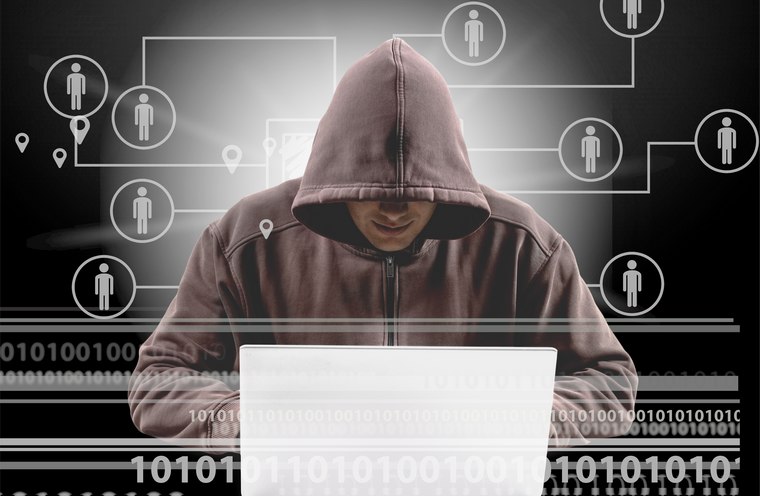Cyber Crimes: Meaning, Types and Examples
The article titled “Cyber Crimes: Meaning, Types and Examples” deals with the definition of Cyber crimes and outline different types of crimes happening in and around us. Definition: Cyber Crimes At the Tenth United Nations Congress on the Prevention of Crime and Treatment of Offenders, in a workshop devoted to the issues of crimes related to computer networks,… Read More »
;
The article titled “Cyber Crimes: Meaning, Types and Examples” deals with the definition of Cyber crimes and outline different types of crimes happening in and around us. Definition: Cyber Crimes At the Tenth United Nations Congress on the Prevention of Crime and Treatment of Offenders, in a workshop devoted to the issues of crimes related to computer networks, cyber crimes were broken into two categories and defined thus: Cyber crimes in a narrow sense (computer crime):...
The article titled “Cyber Crimes: Meaning, Types and Examples” deals with the definition of Cyber crimes and outline different types of crimes happening in and around us.
Definition: Cyber Crimes
At the Tenth United Nations Congress on the Prevention of Crime and Treatment of Offenders, in a workshop devoted to the issues of crimes related to computer networks, cyber crimes were broken into two categories and defined thus:
-
Cyber crimes in a narrow sense (computer crime): Any illegal behavior directed by means of electronic operations that targets the security of computer systems and the data processed by them.
-
Cyber crimes in a broader sense (computer-related crime): Any illegal behavior committed by means of, or in relation to, a computer system or network, including such crimes as illegal possession [and] offering or distributing information by means of a computer system or network.
This is just a list of the known crimes in the cyber world. The unknown crimes might be far ahead of these since the lawbreakers are always one step ahead of lawmakers.
Types of Cyber Crimes
1. Cyber pornography
This would include pornographic websites; pornographic magazines produced using computers (to publish and print the material) and the Internet (to download and transmit pornographic pictures, photos, writings etc). (Delhi Public School case)
2. Sale of illegal articles
This would include sale of narcotics, weapons and wildlife etc., by posting information on websites, auction websites, and bulletin boards or simply by using email communication. E.g. many of the auction sites even in India are believed to be selling cocaine in the name of ‘honey’.
3. Online gambling:
There are millions of websites; all hosted on servers abroad, that offer online gambling. In fact, it is believed that many of these websites are actually fronts for money laundering. Cases of hawala transactions and money laundering over the Internet have been reported.
4. Intellectual Property Crimes
These include software piracy, copyright infringement, trademarks violations, theft of computer source code etc. In other words, this is also referred to as cyber-squatting. Satyam v. Siffy is the most widely known case.
5. Email spoofing
A spoofed email is one that appears to originate from one source but actually has been sent from another source. The best example of the email spoofing can be given by an Executive’s case, where he pretended to be a girl and cheated an Abu Dhabi based NRI for crores by blackmailing tactics.
6. Forgery
Counterfeit currency notes, postage and revenue stamps, mark sheets etc can be forged using sophisticated computers, printers and scanners. Outside many colleges across India, one finds touts soliciting the sale of fake mark sheets or even certificates. These are made using computers, and high-quality scanners and printers.
7. Cyber Defamation
This occurs when defamation takes place with the help of computers and/or the Internet. E.g. someone publishes defamatory matter about someone on a website or sends e-mails containing defamatory information to all of that person’s friends.
8. Cyber stalking
The Oxford dictionary defines stalking as “pursuing stealthily”. Cyber stalking involves following a person’s movements across the Internet by posting messages (sometimes threatening) on the bulletin boards frequented by the victim, entering the chat-rooms frequented by the victim, constantly bombarding the victim with emails etc.
7. Unauthorized access to computer systems or networks
This activity is commonly referred to as hacking.
8. Email bombing
Email bombing refers to sending a large number of emails to the victim resulting in the victim’s email account (in case of an individual) or mail servers (in case of a company or an email service provider) crashing.
9. Data diddling Cyber Crimes
This kind of attack involves altering raw data just before it is processed by a computer and then changing it back after the processing is completed.
10. Salami attacks
These attacks are used for the commission of financial crimes. The key here is to make the alteration so insignificant that in a single case it would go completely unnoticed. E.g. a bank employee inserts a program, into the bank’s servers, that deducts a small amount of money (say Rs. 5 a month) from the account of every customer.
No account holder will probably notice this unauthorized debit, but the bank employee will make a sizeable amount of money every month.
11. Denial of Service attack
This involves flooding a computer resource with more requests than it can handle. This causes the resource (e.g. a web server) to crash thereby denying authorized users the service offered by the resource. Another variation to a typical denial of service attack is known as a Distributed Denial of Service (DDoS) attack wherein the perpetrators are many and are geographically widespread.
It is very difficult to control such attacks. The attack is initiated by sending excessive demands to the victim’s computer(s), exceeding the limit that the victim’s servers can support and making the servers crash. Denial-of-service attacks have had an impressive history having, in the past, brought down websites like Amazon, CNN, Yahoo and eBay!
12. Virus/worm attacks
Viruses are programs that attach themselves to a computer or a file and then circulate themselves to other files and to other computers on a network. They usually affect the data on a computer, either by altering or deleting it. Worms, unlike viruses, do not need the host to attach themselves to. They merely make functional copies of themselves and do this repeatedly till they eat up all the available space on a computer’s memory.
The VBS_LOVELETTER virus (better known as the Love Bug or the ILOVEYOU virus) was reportedly written by a Filipino undergraduate. In May 2000, this deadly virus became the world’s most prevalent virus. It 85 struck one in every five personal computers in the world. When the virus was brought under check the true magnitude of the losses was incomprehensible. Losses incurred during this virus attack were pegged at US $ 10 billion.
VBS_LOVELETTER utilized the addresses in Microsoft Outlook and e-mailed itself to those addresses. The e-mail which was sent out had “ILOVEYOU” in its subject line. The attachment file was named “LOVE-LETTER-FOR-YOU.TXT.vbs”. People wary of opening email attachments were conquered by the subject line and those who had some knowledge of viruses did not notice the tiny .vbs extension and believed the file to be a text file. The message in the e-mail was “kindly check the attached LOVELETTER coming from me”.
Probably the world’s most famous worm was the Internet worm let loose on the Internet by Robert Morris sometime in 1988. The Internet was, then, still in its developing years and this worm, which affected thousands of computers, almost brought its development to a complete halt. It took a team of experts almost three days to get rid of the worm and in the meantime, many of the computers had to be disconnected from the network.
13. Trojan attacks
A Trojan as this program is aptly called is an unauthorized program which functions from inside what seems to be an authorized program, thereby concealing what it is actually doing. There are many simple ways of installing a Trojan in someone’s computer.
To cite an example, two friends Rahul and Mukesh (names changed), had a heated argument over one girl, Radha (name changed) whom they both liked. When the girl, asked to choose, chose Mukesh over Rahul, Rahul decided to get even. On the 14th of February, he sent Mukesh a spoofed e-card, which appeared to have come from Radha’s mail account. The e-card actually contained a Trojan. As soon as Mukesh opened the card, the Trojan was installed on his computer. Rahul now had complete control over Mukesh’s computer and proceeded to harass him thoroughly.
14. Web jacking
This occurs when someone forcefully takes control of a website (by cracking the password and later changing it). The actual owner of the website does not have any more control over what appears on that website.
15. Theft of computer system
This type of offence involves the theft of a computer, some part(s) of a computer or a peripheral attached to the computer.
16. Physically damaging a computer system
This crime is committed by physically damaging a computer or its peripherals.





